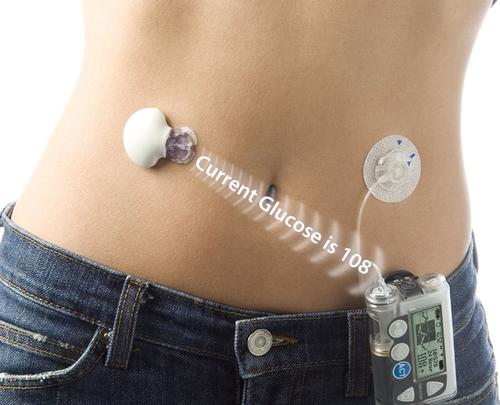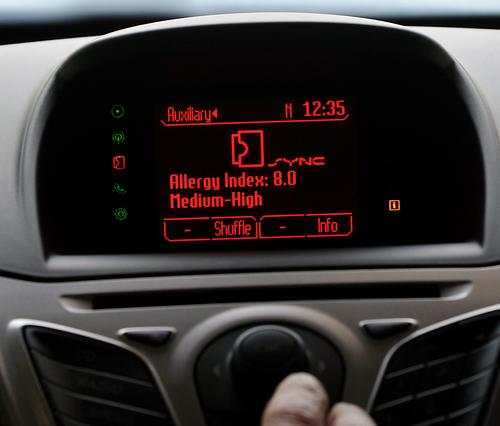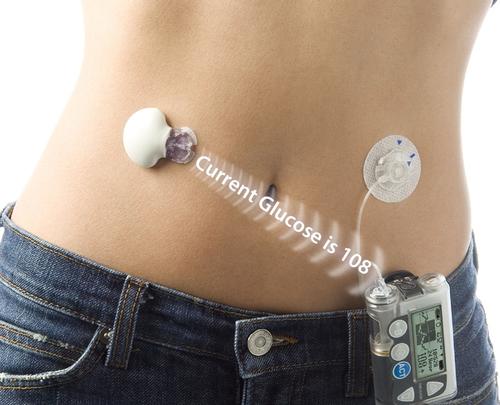July 8, 2011

When Cadillac engineers introduced a PC for the car 11 years ago, it's unlikely they ever foresaw a day when an auto manufacturer would use computing power to check the glucose levels of diabetics inside the vehicle.
Unlikely as that may seem, though, it's exactly what Ford Motor Co. did recently. Ford announced that its engineers were working on a research project in which the Ford Sync's communications system would be linked to glucose monitors worn by drivers or passengers in the car. The application enables the monitor to "talk" to the vehicle via a Bluetooth connection, even going so far as to interrupt a phone call or a navigation directive to alert the driver to a potentially dangerous blood sugar level.

What's really striking, however, is the contrast between the glucose monitor idea and Cadillac's in-car PC development. Twelve years ago, GM charged its engineers with the task of designing a PC for the sporty Seville STS. It was, in essence, an inside job. The giant automaker assigned 60 engineers to the project, and after 19 furious months, rolled out a product capable of connecting drivers to their email and to the Internet. The project had the blessing of GM's bigwigs, all the way up to former chairman and CEO Rick Wagoner.
Unfortunately, it didn't stick. Thirty months later, Cadillac's auto "infotainment" system was shelved.
Now contrast that with Ford's story. Ford was initially approached by Medtronic Inc., a major manufacturer of electronic medical systems. Medtronic's idea was to sync up with the pre-existing Ford Sync and create a health aid for drivers who happen to be among America's 26 million diabetes sufferers.
It wasn't a simple matter for Ford engineers, but it wasn't a 19-month project for a crew of 60, either. Ford's small engineering team wrote software that would enable the monitor to communicate with Sync, while also endowing Sync with the ability to arbitrate the device's demand for its time.
"It's a matter of recognizing that there's another valid participant in the connected ecosystem within the vehicle," explains K. Venkatesh Prasad, senior technical leader for Infotronics Research and Advanced Engineering at Ford, in an interview.
The idea, Prasad says, is to make sure the additional complexity of the device doesn't overwhelm the users. "We have to make sure we do the right thing for the drivers. We have to manage all of that for them."
Still, it's a big change from the way things were done 11 years ago.
That's not to say GM did it wrong and Ford did it right. For all we know, the Ford-Medtronic glucose measurement system may never see the light of day.

No, the point is that the business/engineering model has changed since 2000. Ford didn't go out and build its own glucose monitor. Instead, it worked with Medtronic, just as it is now working with SDI Health on in-vehicle allergy alerts and with WellDoc on cloud-based health services.
That's the same approach all automakers are now using for in-vehicle music. Today, drivers can bring their iPods into the vehicle, or just access their personal music lists from the cloud.
Using today's business model, automakers can react more quickly to new technological trends. And health seems to be one of those trends.
"As the population ages, consumers with chronic diseases are looking for ways to get peace of mind," says Thilo Koslowski, vice president and distinguished analyst for Gartner Group, in an interview. "They're realizing that smart devices are available to manage their health-related issues, and they expect those devices to be available to them while they're driving."
Indeed, in a recent study by Gartner, approximately 5 percent of surveyed drivers said they would "definitely" want such technologies on their next vehicles. Another 15 percent described themselves as "likely" to want the health and wellness capabilities. Think about it: If US vehicle sales amount to 15 million a year, it could mean that as many as 3 million of these systems will be adopted by consumers.
All of this points back to the advantages of the new model. Automakers can expend less design energy on new ideas and move more quickly on trends that are bubbling to the surface. All they have to do is put the platform in place to interface with the new technologies. If the ideas don't pan out, the automakers can move on without great loss. Most important, engineering teams aren't forced to invest tens of thousands of hours on a prediction of a distant future that virtually no one can see.
"It goes back to what we've been saying," Koslowski says. "The automobile is the ultimate mobile device platform. And now companies are realizing that there are ways to leverage that platform and extend their service offerings."
About the Author(s)
You May Also Like



